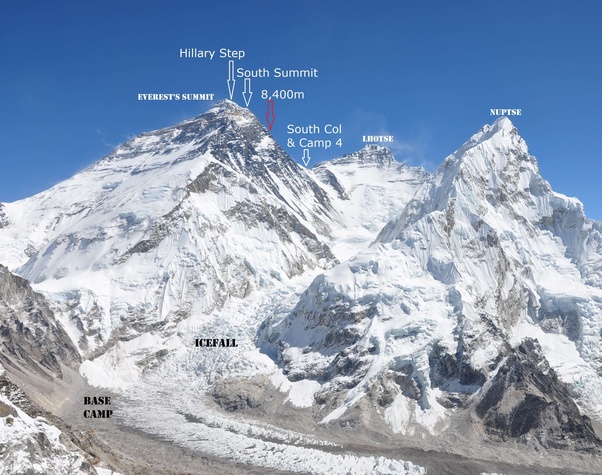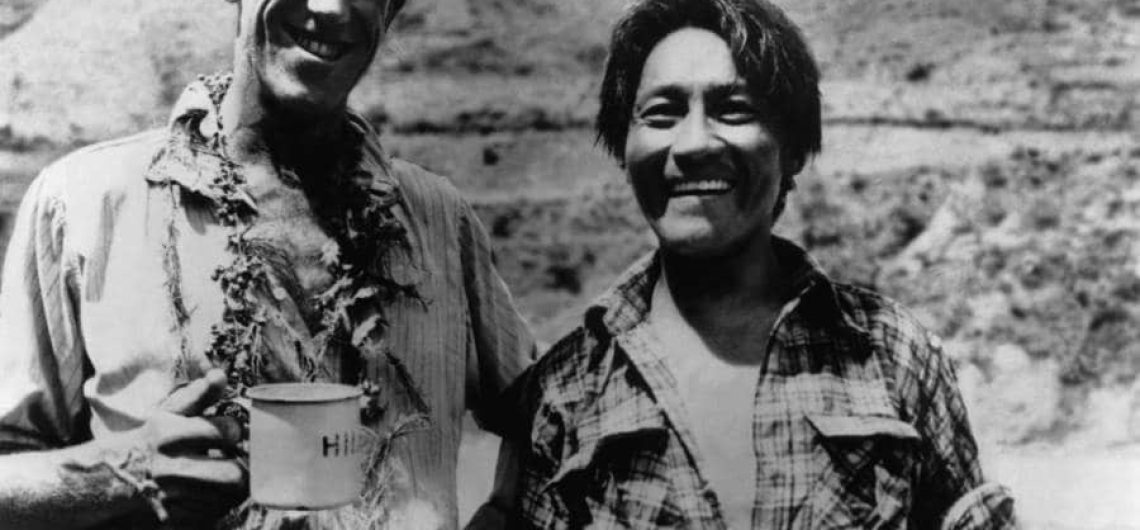Starting in 1921, wealthy countries organized large-scale efforts to conquer Everest and be the first to reach its summit. These expeditions, funded by governments and contributions from private donors and the public, would send hundreds of porters and dozens of climbers on lengthy missions to the Himalayas every few years.
With every journey to high altitudes, strategies for dealing with elevated locations were polished, the quality of mountain food was enhanced, comprehension of oxygen deprivation progressed, technology for braving cold weather improved significantly, systems for delivering bottled oxygen became more reliable, and equipment for climbing mountains became more lightweight and durable.
Various paths leading to the summit were charted, highlighting ideal spots for resting at intermediate camps and marking areas where equipment could be stored. Experiences gained along the way were recorded, frequently accompanied by talks given to the public by those who had made the journey back, along with visual images to provide a more in-depth understanding.
Numerous mountaineers participated in a series of tries, gaining valuable high-altitude team experience along the way. Furthermore, the most skilled Sherpas in climbing were in high demand and easily found new jobs for future attempts. Overall, each try had a greater chance of success than the one before.
As years passed, each decade brought about a new milestone in mountaineering. Hillary and Tenzing Norgay Sherpa stood out as exceptional high altitude climbers during their time. However, it was inevitable that a skilled climber would eventually find themselves in the perfect position to conquer the summit at 8,849m.

To put it simply: Hillary and Norgay stood on the shoulders of giants, and they were the tip of the spear.
A concise overview of a selection of expeditions is outlined below. It is important to recognize that each of these expeditions was massive and intricate, with the potential for entire books to be dedicated to their exploration (indeed, several such books already exist).
1921: Exploration in the northern region of the UK/Tibet – After five months of challenging climbing near the base of Mount Everest, a spot for entry was finally discovered. In a letter to his wife, Mallory expressed, “We are on the verge of venturing into uncharted territory.” The expedition successfully reached an altitude of 7,000m.
1922: The team managed to reach an impressive altitude of 8,320 meters during their attempt on the North side in the UK.1924: UK Attempt on the North side – The team reached 8,200m.
1933: British climbers making an effort on the northern part of the mountain encountered a challenging obstacle known as the Second Step, which one of the climbers described as impossible to climb. This occurred at an altitude of 8,570 meters.
1935: UK Reconnaissance – The group thoroughly analyzed the West Ridge along with considering a potential approach from the Southern or Nepali side. Notably, Norgay served as a porter during this expedition.
1938: The team from the UK made efforts on the North side of the mountain, reaching an impressive height of 8,290 meters by following a previously unexplored route. Unfortunately, all further expeditions had to be called off as a result of the outbreak of World War II.
1950: Exploratory missions were carried out by the US and UK on the southern side of Nepal, eventually resulting in the successful first ascent of Mount Everest.
1951: In the UK Reconnaissance on the South side, Hillary played a crucial role. His remarkable physical endurance was evident throughout the journey. Along with the team leader, Hillary reached a height of 6,100m on Mount Pumori, which is located just 10 kilometers away from Everest. From this elevated position, they had a clear view of the path leading to the summit. Hillary felt confident that he could conquer the challenging climb ahead. The only portion that remained unseen was the upper section beyond the South Col.
1952: Swiss team attempted to reconquer the route discovered by UK team the previous year on the South side. With Norgay in their midst, they climbed to a record-breaking height with Lambert, stopping just 150m short of the summit.
1952 Autumn: An attempt was made by Swiss climbers on the South side of Everest. The race to reach the summit was intensifying, with the likelihood of someone achieving this feat looming close. Lambert and Norgay were part of the climbing team once more, however, their progress was impeded by adverse weather conditions when they reached 8,100m.
1953: The British put forth a strong effort on the southern side of Everest in 1953. A total of 360 porters worked hard to transport equipment and supplies all the way to Base Camp. As the expedition progressed, 13 foreign climbers and 34 Sherpas began ascending to higher altitudes, continuously moving equipment to the next camp. In total, they managed to carry an impressive three tons of gear and supplies above Base Camp.
Following over two months spent on the mountain, the initial duo attempting to reach the summit embarked on their final push from Camp 8. Equipped with a closed-circuit oxygen system, they encountered a setback when the valves malfunctioned. Despite multiple efforts to repair the oxygen system, their breathing became more difficult as they ascended. Regrettably, the pair had to acknowledge defeat at 8,750m, merely 100m away from reaching the summit. They left a small supply cache behind for the next attempt. Their valiant efforts to pave the way towards the summit marked the conclusion of their heroic contributions to the team.
The day after, Hillary and Norgay departed from Camp 8 equipped with the open-circuit oxygen system, a method still utilized in modern times. Preceded by a group of climbers carrying additional oxygen tanks, a tent, and supplies, they ascended to approximately 8,450 meters. Establishing Camp 9 at the same altitude, the rest of the team descended while Hillary and Norgay continued their ascent.
The next day, Hillary and Norgay ascended 300m further along the path of compacted snow that their fellow team members had previously marked. Continuing upwards, they proceeded to scale an additional 100m beyond any previous record, until they finally reached the peak of Everest – a collective accomplishment many years in the coming.
Is it possible that some of the Sherpa people have already ascended Everest even before Edmund Hillary, but just not on the record?
It seems unlikely that any Sherpas climbed Mount Everest before Western expeditions began, for various reasons. Firstly, the Sherpas lacked the necessary equipment, including not just oxygen but also modern cold weather gear like down jackets. This advanced gear was not available to them until Western expeditions introduced it to Nepal. Secondly, there were cultural barriers as well. In Sherpa culture, Himalayan peaks were considered sacred and many were off-limits for climbing. Sherpas even performed ceremonies to appease the gods of the mountains before embarking on expeditions. Furthermore, mountaineering itself was primarily an invention and pastime of European men, who had the leisure time and financial means to pursue such endeavours. The Industrial Revolution played a significant role in creating this leisure class, which was able to explore new interests like mountain climbing. Economically, it made little sense for Sherpas to risk their lives climbing mountains when their primary focus was on survival and providing for their families. It was only when rich Westerners arrived and paid Sherpas to climb that they engaged in this activity. Climbing a peak like Everest required significant time and supplies, as well as assistance from a large group of able-bodied individuals to transport gear and sustain the climbers. The logistical challenges of climbing such a mountain would have made it unlikely for Sherpas to attempt it without outside support. Overall, the idea of Sherpas climbing Everest before Western expeditions is not supported by historical accounts and seems inconceivable given the circumstances.
![]()


Comments